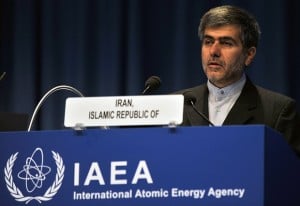
Differences in interepretation of the IAEA report center on what it says–literally and between the lines–about whether Iran continued with weaponization activities after 2003.
As they say in television, let’s go to the videotape.
The report says in Paragraphs 19 and 20 that in the late 1990s or by the early 2000s, weaponization activities were consolidated in the so-called AMAD Plan, which had Dr. Mohsen Fakhrizadeh as executive officer and reported to the Ministery of Defense Armed Forces Logistics (MODAFL).
Paragraphs 23 and 24 contain this salient language: “owing to growing concerns about the international security situation in Iraq and neighboring countries at that time [2003] work on the AMAD Plan was stopped rather abruptly. . . however, staff remained in place to record and document the achievement of their respective projects . . . [workplaces were cleaned or eliminated] “so that there would be little to identify the sensitive nature of the work”; but information indicates that “some activities previously carried out under the AMAD Plan were resumed later, and that Mr. Fakhizadeh retained the principal organizational role [and] continued to report to MODAFL”; further, information indicates that “in February 2011, Mr. Fakhizadeh moved his seat of operations from MUT to an adjacent location known as the Modjeh Site, and that he now leads the Organization of Defensive Innovation and Research.” “The Agency is concerned because some of the activities undertaken after 2003 would be highly relevant to a nuclear weapon program.” [my italics]